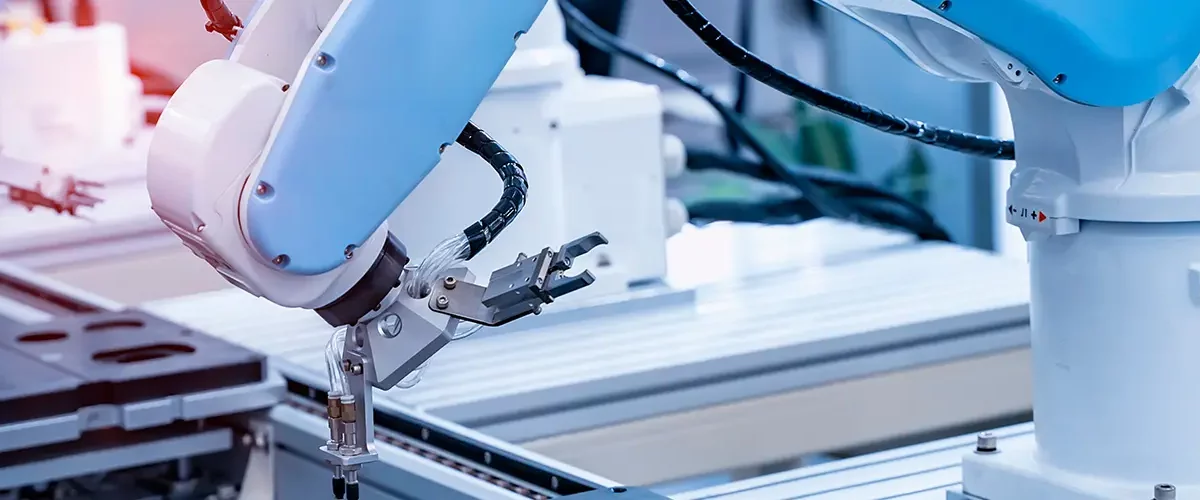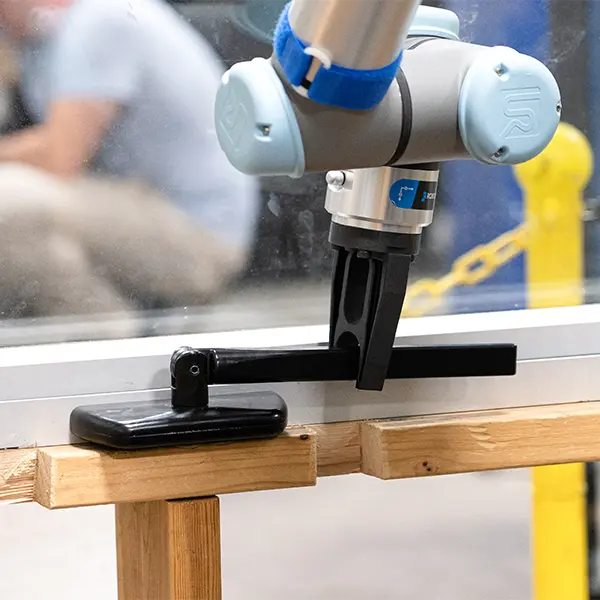
Revolutionizing Robotics: The Advantages of 3D Printed EOAT
Blog Article | December 1, 2023
In the dynamic landscape of industrial automation, End-of-Arm Tooling (EOAT)—or end effectors—emerge as the perfect innovation transforming robotic capabilities. These vital attachments extend the versatility of robotic arms, enabling them to execute an array of tasks with unparalleled speed and precision. It's an exciting time for factory processes, where the ingenuity of EOAT design is revolutionizing production efficiency, product quality, and economic prudence.

The Multifaceted Applications of EOAT
EOAT's utility exceeds the conventional image of robotic arms merely shifting objects along assembly lines. Its designs are as diverse as the tasks they perform—from wielding grippers and welders to deploying cameras for meticulous quality control. Whether it's the touch of a gripper or the aim of a camera, EOAT is the key player in a robot's operational efficacy.
Designing EOAT: A Convergence of Innovation and Pragmatism
Crafting EOAT is an exercise in precision engineering, demanding a thorough understanding of the task at hand and the environment it operates in. It's about striking the perfect balance between strength and agility, ensuring the robotic arm functions at peak efficiency without compromising on durability or safety.
The Symbiosis of Strength and Weight
A groundbreaking consideration in EOAT design is the strength-to-weight ratio. The advent of 3D printing has paved the way for lighter tools that reduce wear and tear on robotic joints, allowing for faster and more energy-efficient operations. This leap in design flexibility allows for the utilization of smaller robots, a benefit for budget-conscious facilities.
Material Matters
Selecting the appropriate 3D printing material is critical. The chosen material must not only possess the necessary strength and durability but also be compatible with the specific environmental conditions of its application.
The Digital Transformation of Inventory
3D printing is redefining inventory management. By maintaining a digital repository of designs, manufacturers can keep parts in-order and organized. Digital inventory enables on-demand printing of EOAT components, highlighting the efficiency and adaptability of modern manufacturing.
Embracing the Future with Markforged
Markforged stands at the forefront of this revolution, offering a suite of printing solutions that blend strength with lightness, durability with agility. The strength-to-weight ratio of printed composites, combined with the rapid, user-friendly production of metal components, positions Markforged as the vanguard of EOAT innovation.

Markforged 3D printers transcend the realm of 3D printer prototyping and trinkets. Find the right Markforged 3D printing solution for your needs.
Case-Study: Dixon Valve
Dixon Valve's journey with 3D printed EOAT is an example of manufacturing success. The company's transition to additive manufacturing for their gripper jaws resulted in cost savings and reduced lead times. Similarly, the use of 3D printed copper shanks slashed both costs and lead times, challenging the traditional notions of inventory management.
The Bottom Line
The integration of 3D printing into EOAT production isn't just a trend; it's a transformation that's reshaping the manufacturing landscape. It's about harnessing the full potential of your robotic systems, adding a layer of supply chain flexibility, and achieving economic efficiency.
Intrigued by the prospects of 3D printed EOAT for your operations? Dive into the world of additive manufacturing with Saratech and discover the tangible benefits it can offer your production line. Together, let's step into a future where robotic precision meets the ingenuity of 3D printing, and let's forge a new standard in industrial automation.

